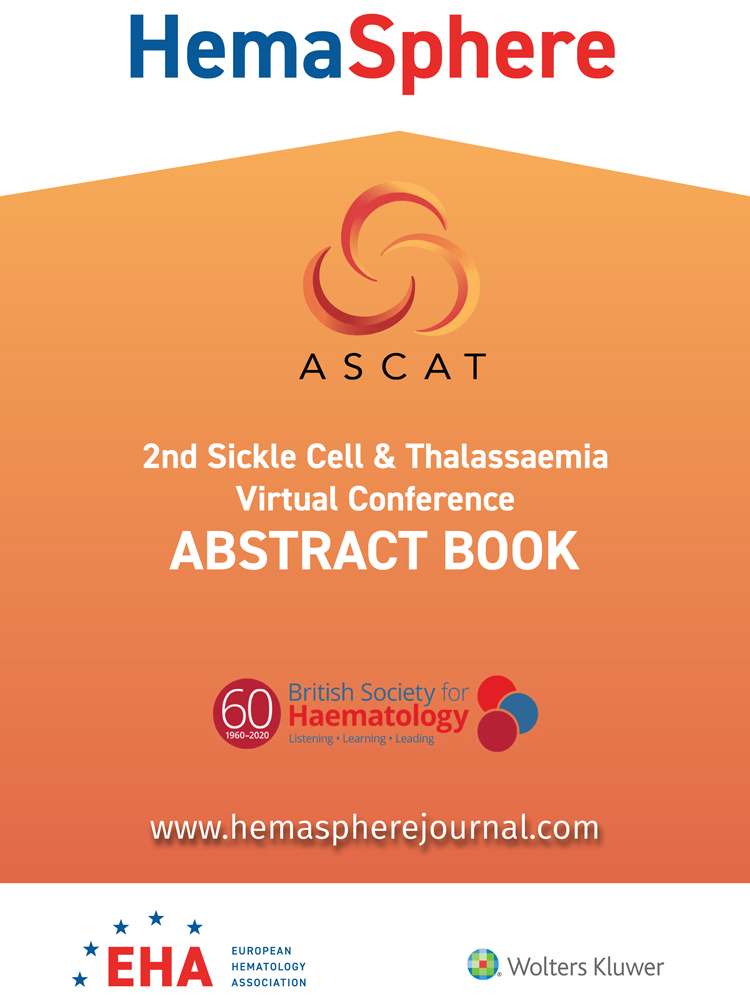P113: INCIDENCE OF HAEMOGLOBINOPATHY IN SLOVAKIA
Background: The paper presents results of 27- year epidemiological study of screening and follow-up haemoglobinopathies in Slovakia.
Aims: The incidence of haemoglobinopathies in Slovek Republic
Methods: Between 1993 – 2020, in two centres in Bratislava and in one centre in Kosice, carriers of beta-thalassaemic genes or other haemoglobinopathies were searched for. Patients with a probability of having a haemoglobinopathy were sent to the research facilities. Diagnosis was performed by haematologists, whereby the family history was evaluated, together with overall clinical condition, blood count and blood smear, iron and haemolysis parameters, mutations of hereditary haemochromatosis, and haemoglobin electrophoresis testing.
Results: A clinical suspicion of the heterozygous form of beta-thalassaemia or other haemoglobinopathies was documented in 694 patients. Of them 25 (6.04%) patients were foreigners. 415 (59.85%) patients were genetically examined. In 385 (92.99%) of them heterozygote beta-thalassaemia was confirmed (in 98 families). Five patients (1.21%) were diagnosed for delta,beta-thalassaemia, 4 patients (0,97%) for delta,beta-gama1-thalasaemia or persistent hereditary fetal haemoglobin. In total we diagnosed 20 mutations of beta-globin gene. The most frequent mutations were IVS 1.110 (G-A), IVS II-1(G-A) and codon 39. Evidence of haemoglobin S (heterozygote sickle cell anaemia) was also notable in two non-relative children, whose fathers were of African origin, in one patient of Ghana and in one patient from Nigeria. One female patient was followed up for haemoglobin Santa Ana (mutation de novo), one family for haemoglobin Bishopstown and one patient for mutation KLF1 gene.
In our group were 14 patients (3.14%) diagnosed for alpha-thalassaemia.
All patients were heterozygotes, only one female patient from Macedonia was a double heterozygote for beta-thalasaemie. Clinicaly all of the patients had a minor or intermedia form. In the years of 2012–2019 we observed 12 pregnant patients with beta-thalasaemie. One of them had multiple pregnancies, all deliveries were without haematological complications.
Conclusions: The study showed that in the west and eastern Slovakia there is a higher number for thalassaemia and other haemoglobinopathies. Mutations are of historical origin or over the past years we have recorded an increase number of mutations from areas with high incidence of haemoglobinopathies. It is necessary to continue in search of pathological gene carriers to avoid serious forms of the disease.
Key words: thalassaemia – sickle cell disease – prevention- epidemiological study – Slovakia
References
1. Divoka et al, Hemoglobin 2016;40:156–162
2. Engert et al, Haematologica 2016;101:115–208
3. Fabryova et al, Centr Eur J Public Health 2017;25:67–71
4. Pinto et al, Internal and emergency medicine 2019;7:1051–64
5. Fabryova et al, J Hematol Transf 2020;7(1):1086
6. Vieves Corrons et al, Acta Biomed 2020;91:2




